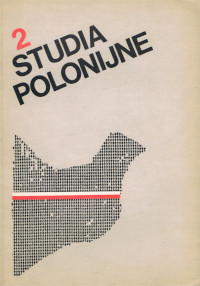Z dziejów duszpasterstwa polonijnego w Harbinie (II) 1926-1949
Main Article Content
Abstrakt
Harbin, in the described period (1926-1949) was one of the biggest cities of Manchuria. Together with the Chinese and Russian populations there lived a considerable Polish community as well as Japanese, Frenchmen, Irishmen, Jews and others. There existed between them religious differences, however, the Christians constituted the greatest proportion. In Polish Catholic parishes worked earnestly the clergymen: Rev. W. Ostrowski (f 14 Sept. 1930), Rev. P. Chodniewicz, Rev. A. Eysymontt and Rev. W. Zborowski — in St. Stanislaus parish, the centre of religious-cultural life of Harbin’s colony; Rev. A. Leszczewicz in St. Josaphat parish. Furthermore, the Polish Franciscans among whose marked off G. Piotrowski, the apostolic administrator and vicar general of Manchuria, and P. Wilczyński, conducted in Harbin the Minor Spiritual Seminary, subsequently transformed — because of lack of candidates — into St. Nicolas’ Lyceum, which was taken on by Eastern Rite Marians.
The pastoral and missionary work was also carried out by the following convents: the Gray Missionary St. Mary’s Sisters and, from 1928, the Polish Ursuline, who conducted an educational institute for girls. The institute, together with a secondary level school, at first for girls of both Polish and Russian origin, was from 1933 a missionary outpost of the Eastern rite. There, along with Russian girls were brought up and educated also Chinese girls and those of other nationalities. The care over the institute, after Rev. G. Piotrowski, was held by the apostolic administrator Rev. Abrantowicz.
The St. Stanislaus’ parish had to overcome with various difficultés, especially connected with maintaining of Polish cultural posts in Harbin: the Lyceum named after H. Sienkiewicz and the elementary school of St. Vincent à Paulo and the Polish weekly „Tygodnik Polski”. To provide possibilities of educating children and youth of widest circles of the Polish colony it was decided to low the fee for attending the Lyceum and the instruction in preliminary schools of St. Vincent; the instructions at St. Josaphat’s church were given gratis. In 1934 the program of the Lyceum was revised and adopted to local conditions. The clergy in Harbin was actively participating in the national festivals, organizing services and ceremonies on occasion of national anniversaries. Their activity undoubtedly had contributed to the good the Church and homeland.

